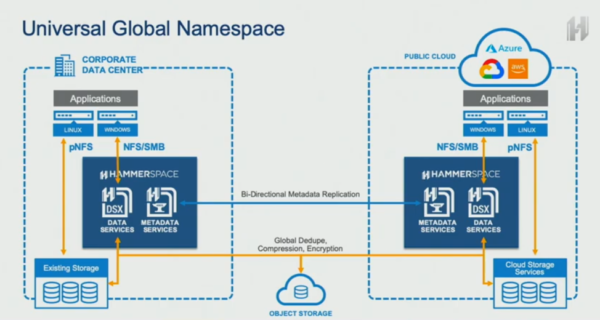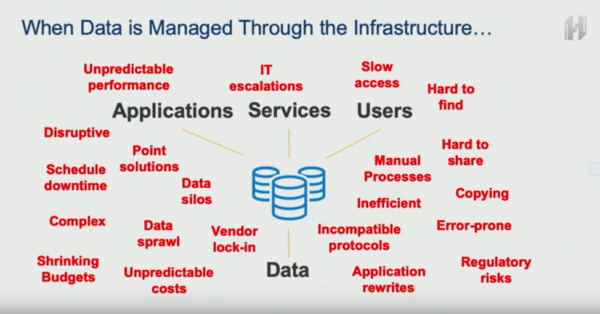The challenge of data management is something organizations have struggled with for decades. For those pursuing hybrid and multi-cloud strategies, this challenge has been compounded by the additional complexity of different storage technologies, interfaces, and management approaches, among other pain points.
Within the storage market, the race has been on to provide customers with a solution that helps ease the burden associated with data management within the data center and across clouds. And with their multi-protocol global filesystem, Hammerspace believes they have the answer customers are looking for.
Data Management Across Data Centers and Clouds Is a Near-Universal Challenge
Technology-centric silos have long been a feature of data management within the data center. Certain datasets have different performance profiles and capacity consumption characteristics, and applications may operate best when interfacing with this data in a particular way. So it has become accepted that many solutions may be needed to meet the data requirements of any given organization.
Meeting these data requirements using multiple, independent solutions has many downsides, though. Sharing or migrating data between siloed solutions can be a painful and slow proposition that is not as agile as the data consumer or application may need.
Managing and maintaining multiple solutions, each with potentially different constituent components, failure modes, and vendor support processes presents a significant challenge for administrative staff, as well.
As applications and data now venture outside of the data center into one (or more) cloud platforms, the difficulty of this situation increases significantly. And now that it appears multi-cloud architectures are here to stay, this problem won’t be going away any time soon.
Hammerspace is Storage Without Silos
This challenging reality presents an interesting opportunity for vendors within the data management and storage space. Hammerspace, in response, has created a viable new software-defined storage platform that targets this issue precisely.
By virtualizing the storage of data and abstracting away the physical layer, Hammerspace is able to deliver a global filesystem across many types of underlying infrastructure, both within the data center and cloud.
In contrast to more traditional solutions that provide a given set of infrastructure and present it for consumption in a static way, Hammerspace orchestrates the placement of data at the appropriate location and on the required type of storage according to user-defined metadata.
In short, the user defines the goal or objective for the data, and the system intelligently places and serves the data according to policy. And because all management is approached from a granular file-level, operations are performed more efficiently than with traditional volume-based approaches.
If needs change in the future, the platform can be dynamically scaled and data can be live migrated without a disruption in application access. Hammerspace is also able to provide persistent storage to container-based Kubernetes workloads, across any supported storage type, which a growing number of customers will surely appreciate.

Conclusion
With data management being at the forefront of many organizations’ minds, especially those invested in hybrid and multi-cloud strategies, it’s clear that previous approaches are no longer optimal. The separate underlying infrastructure, or a difference in hosting platform, should not require a completely separate management approach.
With Hammerspace, customers can transition to a uniform storage platform that spans physical locations, cloud providers, and underlying infrastructure. Through a unified platform and business-centric file-based policies, the needs of the business become the focus, not the capabilities and limits of the infrastructure.
To hear more about Hammerspace and the capabilities of their global filesystem, check out their presentation at Cloud Field Day 6.





